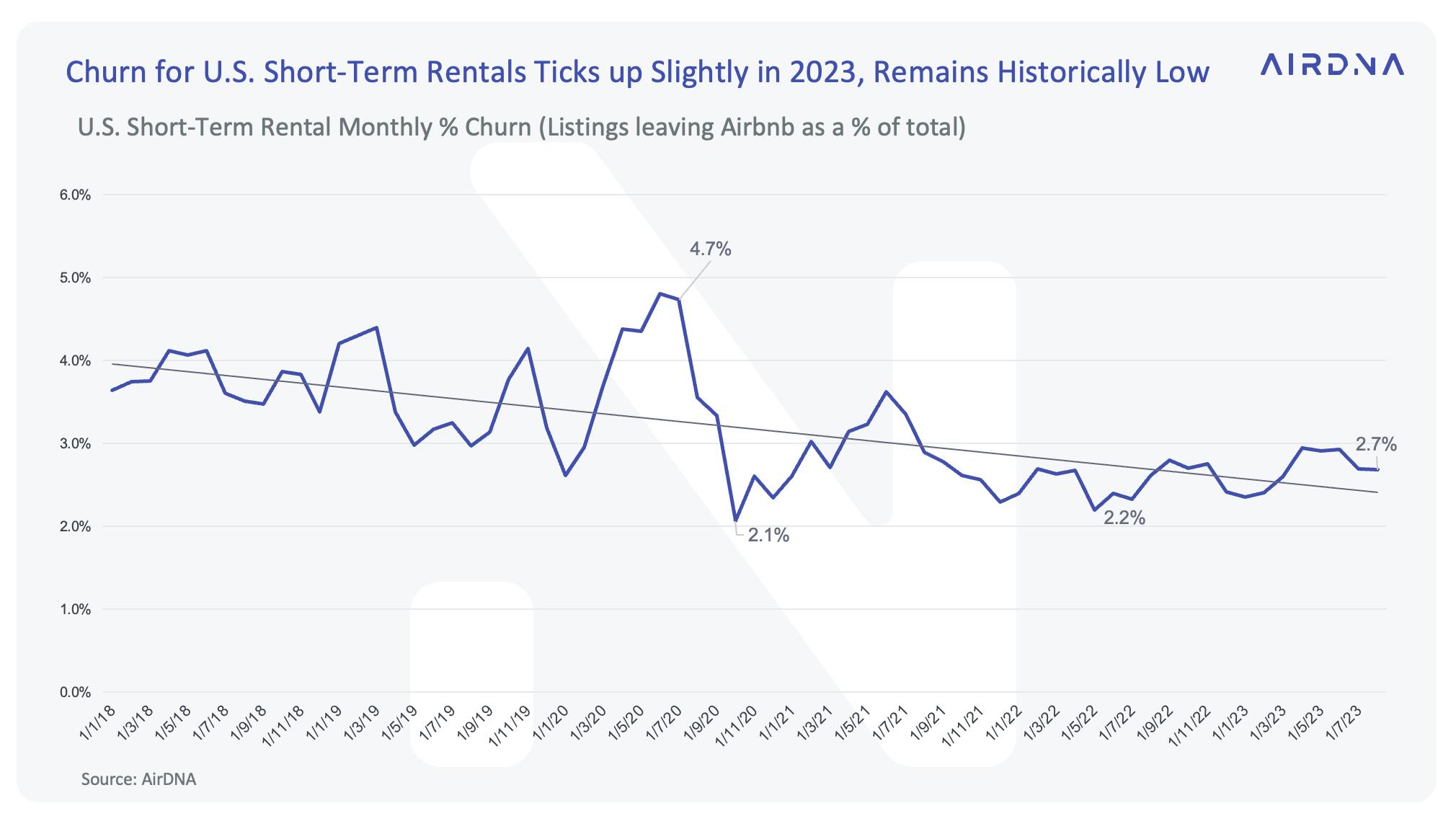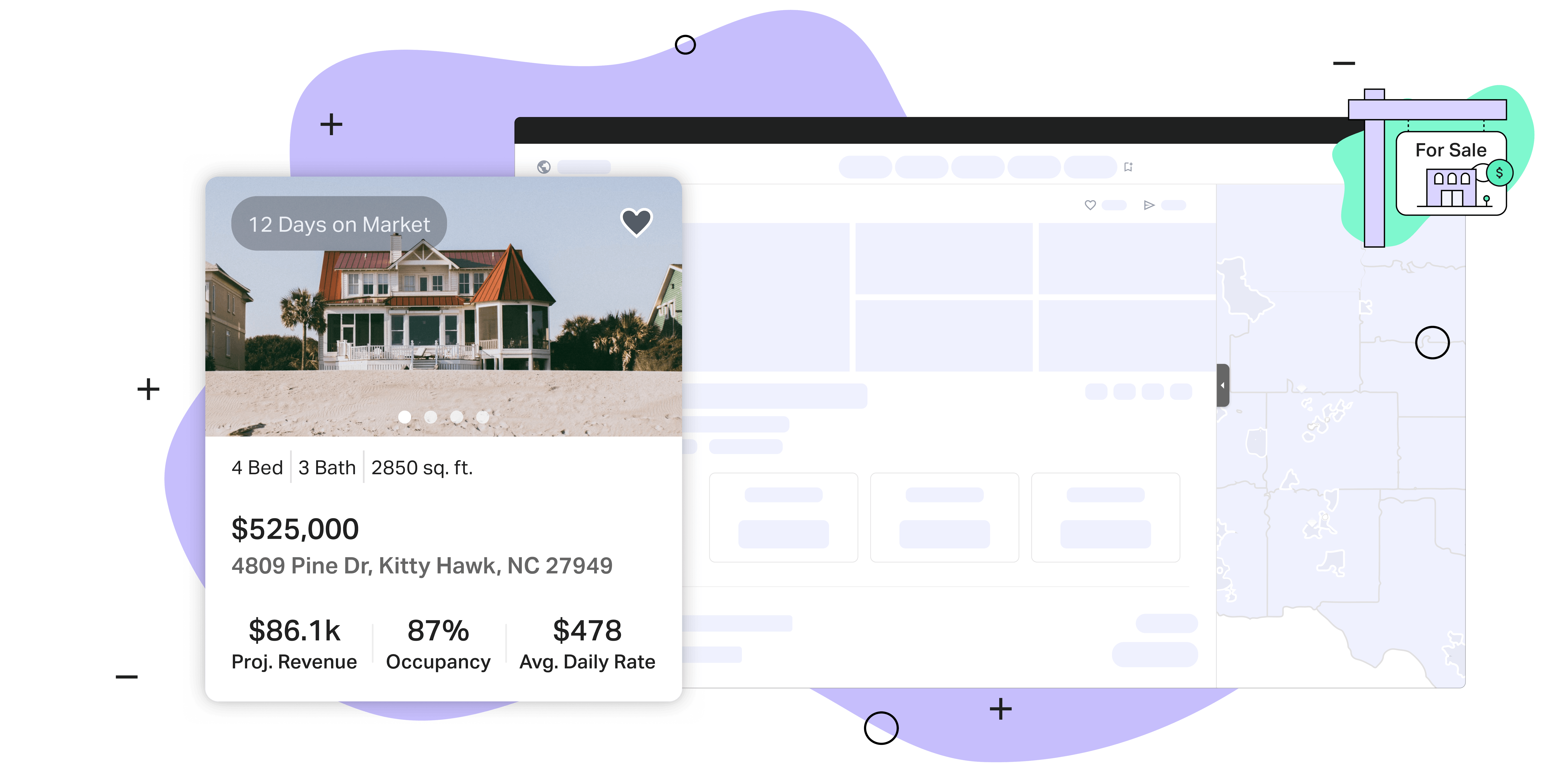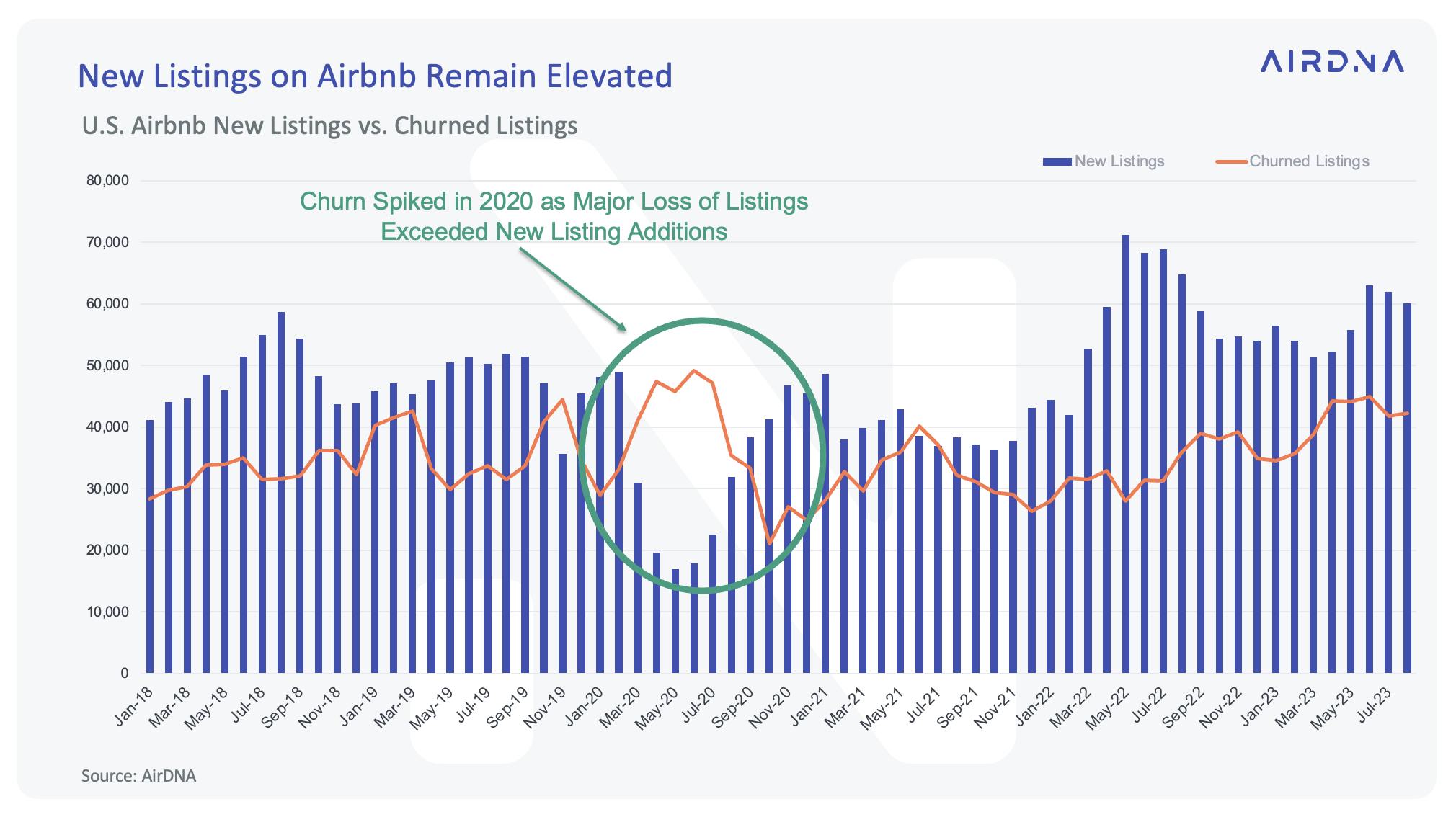AirDNA Research
The Repeat Rent Index and Why You Might Want to Use It

The press and data providers like AirDNA often publish aggregate data that paints a broad picture of entire markets, countries, or continents. If you're reading these reports and don’t feel that your experience matches up, well, there might be a good reason for that.
In the highly dynamic world of short-term rentals (STRs), where listings can grow as much as 25% in just a year (as was the case nationally in the US in 2022), the types of properties entering the market can influence performance statistics just as easily as changing performance in existing listings can.
In other words, your long-established modest vacation home and every listing like it could be having a flat season for average daily rates (ADR), charging more or less the same as last year, but a group of new luxury villas opening up nearby and charging extravagant rates could be driving the aggregate ADR for the entire market through the roof! The disconnect between the performance of existing stock and the effect of the mix of new entrants can create a misleading narrative. While understanding both elements is potentially useful, how can you as a host disentangle them?
One popular method that hosts and other lodging professionals use to gauge their property’s performance against similar properties is benchmarking. This entails picking several comparable properties that you might compete against, based on location, size, amenities, and any other factors that might come in useful. As a host, you can do this automatically through AirDNA’s comp set. Benchmarking is a powerful tool, but because of its highly tailored nature, it doesn’t necessarily capture the ups and downs of the entire market. The small number of properties makes it impossible to confidently distinguish the effects of changing regulatory and economic conditions. After all, a comp set is a small sample by design.

That’s why AirDNA is proposing an alternative measure that considers many more existing properties in a market: the Repeat Rent Index. The Repeat Rent Index (RRI) was inspired by repeat sales indices used in the residential market. Karl Case and Robert Shiller wanted to track residential home prices, but noticed that the current measure used at the time, the NAR median home sales price, could not account for the types of homes being sold in any given month, which varied dramatically. Moreover, they noted that as incomes rose over time, new homes generally increased in quality as well.
Case, Karl E., and Robert J. Shiller. "Prices of single family homes since 1970: New indexes for four cities." (1987).
The solution Case and Shiller came up with was to only look at homes that had sold more than once and use the proportional increase in price for the same property. Not every property will be sold in each period, but as long as there are multiple sales in each period, a reasonable estimate of the change in price can be made.
There are analogies between residential property sales and STRs that make adaptation of the Case-Shiller approach attractive. Like home sales, not every STR unit is let in every period. A Repeat Rent Index (RRI) is somewhat easier to construct than a repeat sales index, however, since each listing is typically rented many more times than homes are sold.
So, how has the change in the types of properties booked — what we might call the “mix shift” — affected ADR and RRI in the U.S. STR market? An examination of year-over-year (YOY) percentage change in available listings since 2021 provides several distinct phases in listing change. The initial months of 2021 reflect the closure of many rentals during the COVID-19 pandemic outbreak, but the growth rate recovers to a relatively stable range between 15-18% by September 2021. This continued until May 2022, when available listing growth accelerated to between 21-26%. Starting in March 2023, available listing growth began steadily slowing and cooled to about 14.5% in September.

We can now compare changes to ADR with changes to the RRI. When ADR change is higher than RRI, we know that the mix shift is contributing to higher ADR, rather than individual hosts increasing their rates. This appears to be the case during the COVID-19 recovery phase, when lower supply, but more preference towards rural or coastal houses rather than urban apartments changed the mix. This suggests that the listings that left during the initial stages of the pandemic were disproportionately smaller or lower-priced.
The mix shift contribution quickly shrank as listing growth recovered and stabilized at 15-18%, with the exception of a spike in January 2022. As supply growth accelerated to 21-26% in May 2022, the mix shift actually started detracting from ADR, suggesting that the properties introduced during the rush in 2022 were disproportionately lower in price. This reversed to contributing again as supply began to slow, except for July 2023, when mix shift detracted significantly. The Repeat Rent Index is able to give a much less volatile indication of changing prices.

In addition to helping broadly characterize new supply entering the market, the difference in ADR and RRI also has important implications for performance benchmarking against aggregates. For instance, if in May a host was able to increase rate by 2%, this would be below the change in national ADR, but it would be well above the national average rate increase for existing properties. Similarly, a host that kept rates the same in July of 2023 may have exceeded the ADR change, but would not have done as well as the national RRI increase, which was slightly positive.
Just like the Case-Shiller index for home sales, the RRI for STR can help provide a clear picture of the performance of typical properties within an aggregate by removing the effect of new entrants into the market. While both indicators have uses, RRI, like comp set benchmarking, offers a better, more direct comparison to peer properties: in simple terms, how much has my neighbor increased their rates?

Read more industry reports
Understand the state of the global short-term rental market

Global data, at your fingertips
Say goodbye to guesswork, with AirDNA's new platform as your trusted advisor for every STR decision.

Housing Doomers and the Myth of Airbnbust
Is the Airbnbust really here? We debunk the doomsayers through a meticulous analysis of AirDNA and housing data, showing that the real situation is a far cry from the apocalyptic scenario we’re seeing on social media.
Find and track your true competitors with AirDNA
AirDNA is the world leader in short-term rental intelligence. Our platform is powered by Vrbo and Airbnb data from over 10 million properties across 120,000 global markets.
Use AirDNA to set the best rates, study your competition, and discover the best places to invest in a vacation rental.